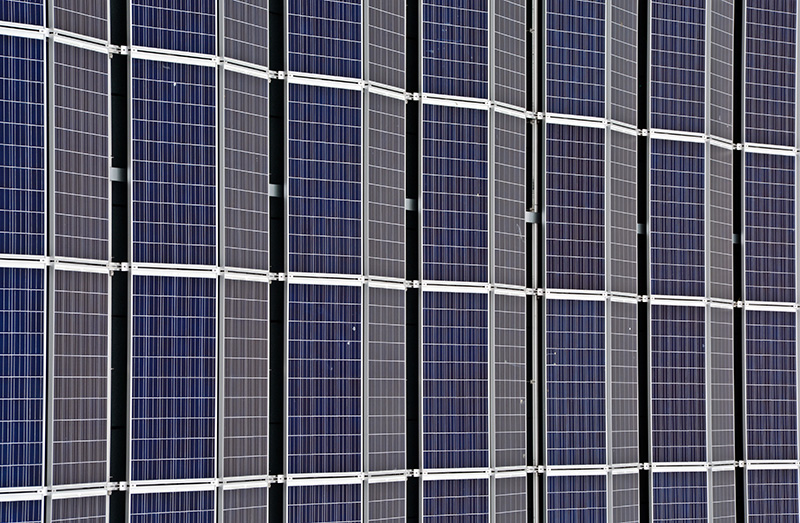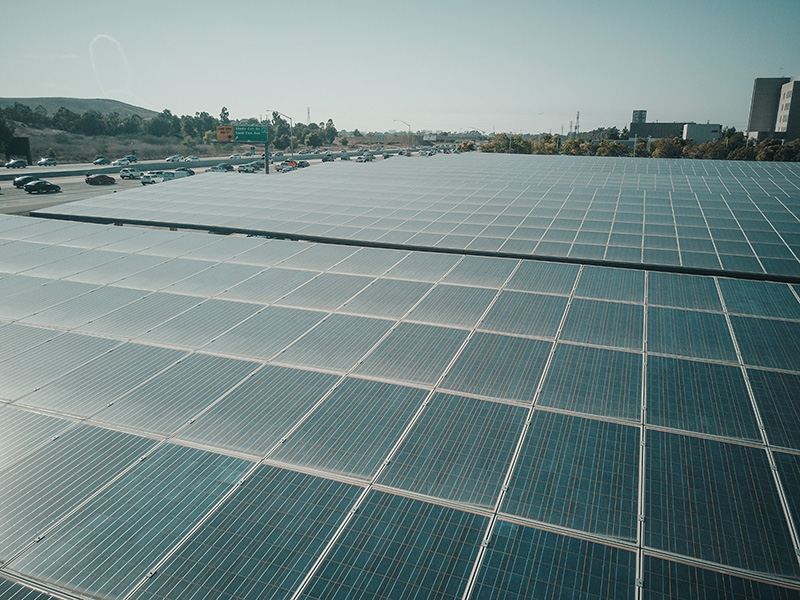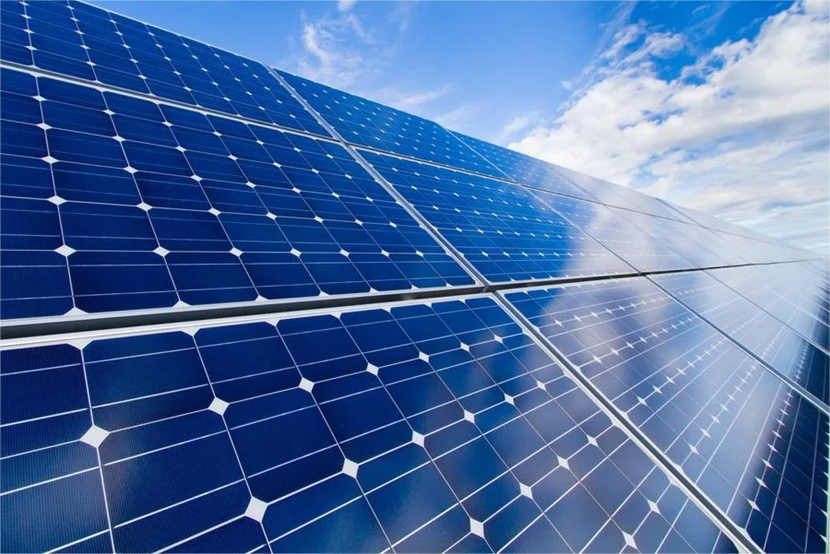Description
Tongwei monocrystalline solar panels are among the top in the industry, offering efficiency rates often exceeding 20%. Known for their durability, they can last over 25 years with minimal degradation. However, it's essential to consider individual needs, local conditions, and budget, and to consult recent reviews and tests before making a decision.
Understanding Solar Panel Efficiency
Solar panel efficiency refers to how effectively a solar panel can convert sunlight into usable electricity. The higher the efficiency, the more power you can get from a given panel size. But what defines this efficiency, and how is it measured? Let's delve deeper into the concept of solar panel efficiency.
Definition of Solar Panel Efficiency
Solar panel efficiency is the ratio of the electrical energy produced by a solar panel to the energy from the sunlight it absorbs. In simple terms, if a solar panel can produce 200 watts from 1000 watts of sunlight, its efficiency is 20%. This metric is crucial as it directly affects the amount of space needed for installation and the panel's power output.
Factors Affecting Efficiency
Several factors can impact the efficiency of solar panels:
- Material Quality: The type and quality of materials used can drastically influence efficiency. For instance, monocrystallinesolar panels typically have higher efficiency than their polycrystalline counterparts.
- Temperature: Surprisingly, solar panels can become less efficient as temperatures rise. This is due to the semiconductor properties of the panel materials.
- Angle and Orientation: The angle at which sunlight hits the panel and its orientation relative to the sun can significantly affect its efficiency.
- Degradation Over Time: As panels age, they might produce slightly less power year over year.
- Soiling and Dirt: Dust, bird droppings, or other substances on the panel surface can reduce the amount of sunlight absorbed, impacting efficiency.
Measuring Efficiency: Standard Test Conditions (STC)
Efficiency is typically measured under Standard Test Conditions (STC). STC represents a set of controlled conditions that simulate the sun's intensity at noon on a clear day, with a temperature of 25°C and an air mass of 1.5. It provides a standardized benchmark, making it easier to compare the performance of different panels. However, it's essential to remember that real-world conditions often differ from STC, so actual efficiency might vary. The
STC rating is a reliable indicator but should be coupled with other evaluations for an accurate representation.
Exploring Longevity in Solar Panels
The longevity of solar panels is one of the primary considerations when investing in solar energy. While solar panels are known for their durability and long operational life, understanding the expected lifespan, factors influencing longevity, and the natural degradation rate can provide a clearer picture of their long-term performance and value.
Lifespan Expectation of Solar Panels
Solar panels typically come with a warranty that can range between 20 to 25 years, but this doesn't mean they stop working after this period. In many cases, they continue to produce electricity efficiently, albeit at a slightly reduced capacity. For instance, a panel might produce 80-85% of its initial output after 25 years. Research suggests that many solar panels can even last up to 40 years, depending on various factors such as maintenance, installation quality, and environmental conditions.
Factors Affecting Longevity
Several elements can impact the longevity of a solar panel:
- Quality of Materials and Manufacturing: Higher quality panels using top-notch materials and manufacturing processes are likely to last longer. Brands renowned for their quality, like SunPower, often showcase better longevity.
- Installation Practices: Proper installation, ensuring the panels are appropriately anchored and positioned, can prevent premature wear and damage.
- Environmental Conditions: Panels exposed to extreme weather conditions, such as hail, heavy snow, or salt mist, might have a reduced lifespan compared to those in more temperate regions.
- Maintenance: Regular cleaning and ensuring that the panels remain free from debris and obstructions can prolong their life.
Degradation Rate and its Impact
Every solar panel has a natural degradation rate, representing the percentage by which its output reduces each year. On average, solar panels degrade at a rate of about 0.5% per year, though this number can vary based on the quality and type of panel. This means that after 20 years, a panel might operate at around 90% of its original capacity. The degradation rate is crucial for calculating the return on investment over the panel's lifespan and understanding when replacements might be necessary. It's worth noting that advances in technology and materials are continually pushing this rate down, leading to panels with longer operational lives.
Top Solar Panel Brands and Models for Efficiency and Longevity
As the shift towards renewable energy becomes more pronounced, choosing the right solar panels is crucial for homeowners and businesses. While various brands claim to offer the best in terms of efficiency and longevity, one name consistently stands out: Tongwei. Let's delve into why Tongwei has captured the attention of solar enthusiasts globally.
Review of Top Performing Brands
Tongwei: As a formidable player in the solar industry,
Tongweihas established itself as a leading manufacturer of high-quality solar panels. Originating from China, this brand has expanded its footprint across the globe, primarily because of its dedication to innovation, quality, and sustainability. Tongwei solar panels are recognized for their superior performance metrics, often outshining competitors in both efficiency and durability.
Noteworthy Models for Efficiency
Efficiency is paramount in solar panels as it determines how much sunlight can be converted into usable energy. When it comes to Tongwei, several models catch the eye:
- Tongwei High-Efficiency Series: This series exemplifies what Tongwei stands for – cutting-edge technology yielding maximum power. Designed to capture and convert even the faintest sunlight, these panels ensure that you get the most out of every sunny day.
- Tongwei Advanced Monocrystalline Panels: Using refined monocrystalline technology, these panels offer impressive conversion rates, often exceeding industry averages.
Best Models for Long-term Durability
Ensuring your solar investment lasts for decades is a priority. Here's how Tongwei ensures longevity:
- Tongwei Durable Series: Durability takes center stage with this series. Whether you're dealing with strong winds, heavy rainfall, or scorching sun, these panels are constructed to withstand the elements, ensuring they last for years without significant degradation.
- Tongwei Anti-Corrosion Panels: Specifically designed for areas with high humidity or proximity to the sea, these panels resist corrosion, a common ailment that affects many solar installations in such regions.
In essence, when one talks about efficiency and longevity in the solar panel industry, Tongwei is undeniably a name to reckon with. Their commitment to quality, research, and customer satisfaction makes them a preferred choice for many. When planning your next solar installation, considering what Tongwei has to offer can make a substantial difference in the long run.
Importance of Panel Materials and Construction
The material and construction of solar panels play pivotal roles in determining their efficiency, longevity, and overall performance. As solar technology has evolved, the industry has witnessed a myriad of advancements in materials and design, directly impacting how we harness the sun's energy. Understanding these materials and their intricacies can offer insights into the potential of solar energy and its trajectory.
Monocrystalline vs. Polycrystalline Panels
The debate between monocrystalline and polycrystalline panels has been long-standing in the solar community.
- Monocrystalline Panels: Made from a single, pure silicon crystal, monocrystallinepanels are known for their high efficiency and sleek, black appearance. Their single-crystal structure allows electrons to flow more freely, often resulting in higher efficiency rates. While they can be pricier than their counterparts, their performance in low-light conditions and space efficiency can justify the cost.
- Polycrystalline Panels: Comprising multiple silicon fragments melted together, polycrystallinepanels exhibit a blueish hue and a somewhat lower efficiency compared to monocrystalline panels. However, their production process is less wasteful and can be more cost-effective, making them an attractive choice for larger installations or where budget constraints exist.
Thin-Film Solar Panels and Their Role
Thin-Film Panels: As the name suggests,
thin-film solar panelsare made by placing one or more thin layers of photovoltaic material onto a substrate. Their lightweight and flexible nature make them versatile, suitable for applications like rooftops, building facades, or even clothing. While generally less efficient than crystalline-based solar panels, their ease of production and adaptability open up unique applications in the solar arena.
Innovations in Panel Material and Design
As the demand for renewable energy grows, so does the push for innovation in solar panel materials and design.
- Perovskite Solar Cells: These are a newer class of solar cells that have shown immense promise. Perovskitematerials have proven to achieve impressive efficiencies in a relatively short time. Their potential for cost reduction and manufacturing scalability has garnered much attention.
- Bifacial Panels: These are panels designed to capture sunlight from both the front and the rear of the module. By harnessing reflected light from surfaces beneath the panel, bifacial designs can achieve increased energy yields, maximizing the output per panel area.
In conclusion, the materials and construction methods adopted in solar panels are crucial determinants of their performance. As research continues and technology advances, we can expect even more efficient and versatile solar solutions in the future.
Maximizing Efficiency and Longevity
The performance of solar panels doesn't solely rely on their construction or materials. How you install, maintain, and pair them with other components can significantly impact their efficiency and lifespan. Let's unravel some key strategies to harness the full potential of solar panels throughout their operational life.
Proper Installation Techniques
The installation of solar panels is the foundation of their performance. Proper positioning ensures panels receive maximum sunlight, translating to higher energy yields. It's not just about facing them towards the sun; factors like the tilt angle can influence how much energy panels produce. For instance, in the Northern Hemisphere, panels should ideally face south with a tilt angle approximately equal to the latitude to capture optimal sunlight year-round. Additionally, avoiding any potential shading, even from minor obstructions like vent pipes or antennas, can prevent significant energy losses. Incorrect installation can lead to energy reductions of up to 25% in some cases, so seeking expertise during installation is paramount.
Periodic Inspection and Maintenance
Routine inspections and maintenance are cornerstones for preserving the longevity and efficiency of solar installations. Dust and debris accumulation can reduce the solar panels' efficiency. For example, research indicates that a layer of dust can cause energy losses of around 5%, while larger obstructions like fallen leaves can have a more pronounced effect. Regular cleaning, especially in areas with frequent dust storms or high pollen, can keep efficiency from dipping. Besides cleanliness, checking for any physical damages, loose connections, or corroded elements ensures the system functions smoothly. Often, a well-maintained solar panel can exceed its expected lifespan, offering returns on investment well beyond initial projections.
Pairing with Appropriate Inverters and Battery Storage
The solar panels' output is only as good as the components they're paired with. An inverter, responsible for converting direct current (DC) produced by panels to alternating current (AC) for home use, plays a pivotal role in the system's efficiency. High-quality inverters, such as those from
SMA or
Enphase, can operate at efficiencies above 95%. Moreover, as solar energy generation can be intermittent, battery storage solutions become essential. Modern batteries, like Tesla's Powerwall or LG's RESU, offer excellent energy retention rates, ensuring that very little of the captured solar energy goes to waste.
To sum up, while the inherent design and material of solar panels play crucial roles, the holistic approach involving correct installation, regular maintenance, and suitable accompanying components can truly unlock their full potential in terms of efficiency and longevity.
Economic Implications of Efficiency and Longevity
The economic benefits derived from solar energy are closely tied to the efficiency and longevity of solar panels. As the solar industry evolves, understanding the cost implications and potential returns from these renewable energy systems is paramount for consumers and businesses alike. Assessing the economic implications necessitates a deep dive into the costs, long-term values, potential returns, and available incentives for solar installations.
Cost vs. Value Over Time
At the outset, purchasing and installing solar panels can seem like a substantial investment. For instance, as of 2021, the average cost of solar panels ranged between $20,000 and $25,000 for a typical home in the U.S., with prices seeing a significant drop from the past decade. However, the real value emerges when analyzing the savings over time. Given the rising electricity prices, a solar installation can offset these costs. With average monthly electricity bills around $100, homeowners can save approximately $1,200 annually. Over a 25-year lifespan of a solar panel system, this amounts to potential savings of $30,000, vastly outweighing the initial investment.
Return on Investment Analysis
When evaluating solar panels as an investment, the Return on Investment (ROI) is a key metric. Considering the aforementioned average costs and savings, the break-even point for many homeowners can be around 8 to 10 years. After this period, the solar system essentially generates "free" electricity. Additional factors, such as increases in property value due to solar installations, further enhance ROI. In certain markets, homes with solar installations have seen property value increases of up to 4.1%, according to the
U.S. Department of Energy.
Incentives and Rebates for High-Efficiency Panels
Governments and institutions around the world recognize the environmental and economic benefits of solar energy, leading to numerous incentives and rebates. In the U.S., the federal Investment Tax Credit (ITC) allows homeowners and businesses to deduct 26% of the cost of installing a solar energy system from their federal taxes. Many states offer additional incentives, further reducing the effective cost. Moreover, manufacturers might provide rebates for high-efficiency panels, encouraging consumers to opt for advanced, more sustainable solutions. These incentives, when combined, can significantly reduce the initial financial barrier to solar adoption.
In essence, while the upfront costs of solar panels can be considerable, the long-term economic implications, both in terms of savings and incentives, present a compelling case for their adoption. The intertwined relationship between efficiency, longevity, and economic return underscores the significance of making informed decisions in the realm of solar energy.



